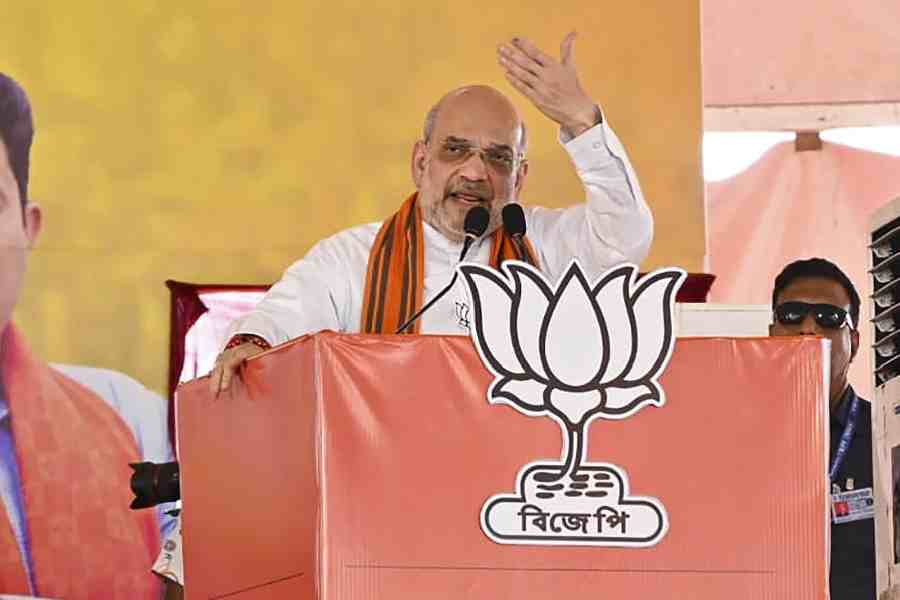Punjab Kings recently hunted down a 262-run target against Kolkata Knight Riders to record the highest successful run chase in T20 history. The match at Eden Gardens also saw the most sixes — 42 — in a T20 match.
That is not all. IPL 2024 has seen the highest-ever total with eight scores above 250. Batting in the Powerplay and death overs has seen the biggest spike in this edition. Cricketers assume that 300 is around the corner and it could happen any day.
Much of it is credited to the Impact Player rule whereby teams can extend their playing XIs to literally make it a 12-a-side affair. A bowler can be substituted for a batter if batting second. It allows the teams to name their XIs after the toss, after taking into consideration the playing conditions and the dew factor.
Teams can now play with more freedom with the cushion of an extra batter. England captain Jos Buttler came in as an Impact Player for the Rajasthan Royals to slam a match-winning hundred against KKR in Calcutta.
The rule came into effect last year and was aimed at providing tactical acumen to the teams. It was greeted with a bit of intrigue since not many were sure of its success.
Mitchell Starc doesn’t expect the upcoming T20 World Cup to be anywhere close to the high-scoring tournament that the IPL season is turning out to be. “There’s no Impact Player rule (in international cricket), so whether that affects the scores is yet to be seen,” Starc said in Mumbai. “I think it probably will. People talk about the balance of the team when you can’t just bring someone in. Your all-rounders come back into play. Captains have to think a bit tactically, too, when you have just 11 players. It’s been interesting to experience it first-hand in the IPL.
“The Impact Player rule changes things a fair bit. Everyone gets to bat a lot deeper having a batting and a bowling XI. There’s a lot made of that rule throughout the tournament and there’s been a lot of high scores, which is the nature of the wickets and the grounds we play on here. When you have batters and batting all-rounders come in at Nos. 8 or 9, it’s a long batting line-up.”
While it is believed that the Impact Player formula has improved the strike-rate of the Indian batters with most of them now daring to play the cheeky scoops and unlocking their atypical big-hitting range, which doesn’t cater to the traditional coaching manual.
However, this has also robbed the batters of their ability to chip in with a few overs since teams can now afford an extra bowler. Team India captain Rohit Sharma blamed the lack of all-rounders on this rule.
“I generally feel that it is going to hold back (all-rounders) because eventually cricket is played by 11 players, not 12 players,” Rohit said on the Club Prairie Fire Podcast with Adam Gilchrist and Michael Vaughan. “I’m not a big fan of Impact Player. You are taking out so much from the game just to make it a little entertaining for the people around.
“But if you look (at) genuinely just the cricketing aspect of it... I can give you so many examples — guys like Washington Sundar, Shivam Dube are not getting to bowl, which for us is not a good thing,” Rohit remarked.
Even Jasprit Bumrah had been critical. “With the time restrictions (over-rate penalties) as well and the Impact Player rule, that does not help the bowler too much because the batting line-up becomes deeper and deeper and the bowler becomes half the bowler when you get an extra option,” the fast bowler said.
Sunrisers Hyderabad’s Sundar has been the biggest victim and it dented his chances of making the World Cup XV. The all-rounder has played only in two out of their nine matches in this edition. The same applies for Riyan Parag as well, who has bowled only one over in nine games.
“Every team is looking to play either a pure batsman or a pure bowler as the Impact Player and all-rounders are not being used,” Axar Patel rued.
This rule has thus not been in sync with India’s preparations for the T20 World Cup. The argument is that it takes something meaningful out of the game and thus needs to be totally scrapped. Innovations can’t come in the way of a player’s skill and talent.
IPL governing council chairman Arun Dhumal told The Telegraph last month that they are ready for a “review” of the Impact Player rule.
Till that happens the rule will continue to trigger a debate. India’s performance in the June tournament could also have a cascading effect on its implementation. The IPL could even initiate a discussion with the core group of India players ahead of next season on the way forward.
One thing is certain: the fundamentals of the game can’t be compromised by having an extra player in the XI.
Looking back
Player substitution had first been tried out in the Big Bash League whereby any of the two listed substitute players could be fielded at the 10-over mark. There was one condition though: the player to be replaced should not have batted or bowled more than one over. The Australians called it the X-Factor Player. However, based on feedback by the teams, the system was scrapped ahead of the 2022-23 BBL season.
The ICC too had experimented with the ‘super sub’ player substitution system in 2005 in ODIs, but that was discontinued within a year.
Flip or flat
The BBL uses a bat instead of a coin for the toss. Rather than the traditional heads or tails, it involves a flip or a flat outcome. But in an unexpected turn of events, the toss had to be done twice in one of the matches last season after the bat flip went all wrong and it landed on its edge.
Split Power
Power Surge is perhaps the most conventional of the new BBL regulations. The normal six-over Powerplay at the start of an innings is split and reduced to four. The remaining two can be deployed by the batting side at any point from the 11th over onwards.
Bonus boost
Bash Boost also has a bonus point system. The team chasing will receive the bonus point if they’re above the equivalent 10-over score of their opposition, while if they’re trailing, the fielding side will receive the point, regardless of the eventual outcome. With victories now worth three points, there is a possible four on offer for each side.
Red rule
The Caribbean Premier League has imposed strict punishments for slow over-rates and has brought in the red card rule. If any team is behind the over-rate at the start of the final over, it will lose a player from the field — selected by the captain — and have six inside the
fielding circle. There will also be an onus on the batting team to keep the game moving. After a first and final warning from the umpires, the batting team will be slapped with a five-run penalty for each instance of time-wasting.
Desert detour
The UAE-based ILT20 league, following in the footsteps of the IPL, introduced the Super-Sub and Wildcards for its inaugural edition last season. The Super-Sub can be introduced after the start of the match or after completion of an over or in case of a batter, at the fall of the wicket or the batter retiring at any time during the over. The bowling team may also utilise a Super-Sub at the fall of a wicket, but that Super-Sub will not be permitted to bowl the remaining balls in that over if the wicket has fallen in the middle of the over.
Each franchise is permitted to add up to two additional players to its squad, beyond the original limit of 22 players. This is an option and not mandatory. If
franchises have already reached the maximum $2.5m salary cap, they will be permitted to spend a maximum of 10% of the salary cap which is $250,000 on Wildcard players. They may come into play at any stage of the tournament.










